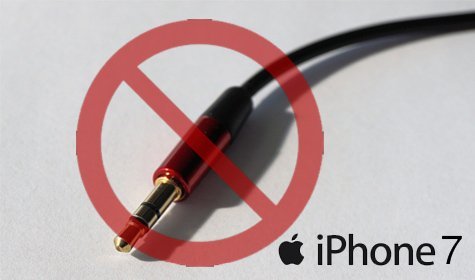Following Apple’s announcement of the headphone jack-less iPhone 7 last week, the Internet exploded in a cacophony of dismay and indignation.
“No one asked to lose the headphone jack,” they wailed.
“We want greater battery life, shatterproof screens, and wireless charging–not new adapter dongles,” they exclaimed.
Such chatter is predictable whenever Apple makes a significant hardware change in its products. It happened, quietly, when Apple dropped the floppy disk from the original iMac. It happened again, less quietly, when they blocked Flash from iPhones and iPads. And it’s happening now with Apple’s omission of the 3.5 mm headphone jack.
What members of the complainer-chorus fail to recognize is innovation only occurs at the cost of older, less valuable technologies. Consumers get water-resistant iPhones, in part, because the headphone jack no longer occupies valuable space inside the phone. And abandoning that antiquated technology–indeed, the headphone jack is over 100 years old–lays the groundwork for the next iPhone to have things we can only dream of today.
Signs of What’s NeXT
It’s my guess the next big thing to go from Apple’s devices is the locally-stored operating system.
Just as Apple dipped its toe into the pool of water-resistance with the last year’s Apple Watch, signs of this next big change are all around us.
When Steve Jobs made his penultimate public appearance at Apple’s annual developer conference in June of 2011, he announced iCloud, a technology current Apple CEO Tim Cook has said is a “strategy for the next decade.”
Apple has demonstrated a pattern of not being first to adopt a new technology, instead waiting until it’s mature enough to deliver a superior user experience.
Witness the proliferation of Google’s Chromebooks, which recently outsold Macs for the first time this year. These “dumb” laptops depend on Internet connectivity to work, and are now blurring the line between computers and smart phones.
Network-based operating systems have many benefits. They can reflect the latest security and feature updates automatically without downloading gigabytes of updates. They can host the same network-based apps across different devices.
Simple terminals accessing software remotely require fewer parts, which means less heat, less noise, and lower prices. Steve Jobs demonstrated one way computing hardware could be simplified by removing the internal hard disk from 50 iMacs to demonstrate this possibility… in 1999.
Perhaps most importantly, network-based operating systems can present a unified user experience across different devices. Apple has always been about ease of use in computing, and they’ve not kept their desire to see macOS and iOS merge a secret, at least as it relates to features.
The only technical hindrance to a fully-network-based OS today has been the lack of proper bandwidth. However, given the increase in adoption of ultra-fast fiber optic Internet connectivity like Google Fiber and faster wireless speeds, that will no longer be the case for much longer.
Letting Go of the Past
An “iCloud OS” device could enlist the computing power of all of your devices–phones, tablets, set-tops–simultaneously to perform intensive tasks. It would make file sharing instantaneous. It would reduce the cost of owning a computer. It would permit instantaneous software upgrades and greater security.
The advent of an iCloud OS would both follow and cause substantial changes in computing hardware.
Where an iCloud OS is concerned, there would be little need for much local storage, solid-state or otherwise. USB, Ethernet, and ThunderBolt peripheral technology will become less useful very quickly as all new printers, speakers, and external monitors go wireless.
It’s not unimaginable that Wi-Fi and Bluetooth would eventually be succeeded eventually by a single cellular radio for high-speed wireless access in all devices. And with new interface designs, the mouse itself, with its pointing and clicking will be replaced completely.
We will lose a lot while gaining so much more. Such rapid innovation is fairly new so it’s understandable that it upsets many. But the fact remains: innovation is iterative, and comes at the cost of shedding the old.
So don’t despair. Enjoy the fact we are living during a dynamic time.
And if you must have a headphone jack, take my advice from a previous column, and don’t buy an iPhone.
This article appeared at FEE.org at: https://fee.org/articles/iphone-7-shows-how-innovation-comes-at-a-cost/

